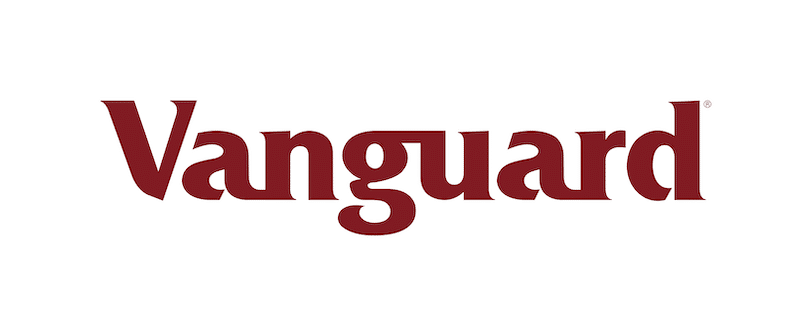Key Points
- Custodial investment accounts (UMGA and UTMA) are taxable investing alternatives to 529 plans and Roth IRAs
- These accounts act as traditional brokerages for your children
- New tools allow you to easily integrate banking and more for kids to truly understand their financial picture
Parents and grandparents are increasingly turning to custodial investment accounts to give children an early financial start. These accounts (officially known as UGMA or UTMA accounts) let adults invest money on a child’s behalf until they reach adulthood.
Unlike traditional savings accounts, custodial accounts can hold stocks, ETFs, and mutual funds, giving young investors the chance to benefit from long-term market growth. But every platform has different fees, features, and transfer rules, and choosing the wrong one can create unexpected tax or financial-aid consequences later.
We reviewed and tested the most popular custodial investment accounts available in 2025, comparing each on costs, usability, and flexibility. Whether you’re saving birthday money, investing an inheritance, or teaching your child about stocks, here’s what to know before you open a UTMA or UGMA account and which providers stand out.
At A Glance:
- Best Overall: Charles Schwab
- Best For Teens: Fidelity Youth
- Best For Custodial Roth IRA: FutureMoney
|
Top Custodial Accounts For 2025 |
|||
|---|---|---|---|
|
Provider |
Best For |
Monthly Fees |
Minimum Balance |
|
Traditional Investing |
$0 |
$0 |
|
|
Teaching Teens To Invest |
$0 |
$0 |
|
|
Custodial Roth IRA & 529 Plans |
$0 – $5/mo |
$5 |
|
|
Index Fund Investing |
$0 |
$0 |
|
|
Full Banking And Investing App |
$10.98/mo |
$1 |
|
|
Personalized Gifting |
$3 – $5/mo |
$20 |
|
|
Integration With Acorns Suite of Tools |
$5 – $10/mo |
$0 |
|
Best Brokerages For Custodial Investment Accounts
Our top choices for custodial brokerages is very similar to our list of best brokerages overall.
These brokerages feature easy-to-set-up accounts, useful account reporting, and no-cost trades for stocks, ETFs, and mutual funds. Most also automatically enroll users in Dividend Reinvestment Programs, so all your money stays invested.
Charles Schwab
This custodial account from Charles Schwab offers $0 minimums, and $0 trades. And if you already have your own Schwab accounts you can manage the custodial account from the same dashboard.
But where Schwab perhaps best stands out is that it offers “Intelligent Portfolios” (robo-advisor portfolios) that come with no advisory fee. These portfolios are monitored daily and automatically rebalanced as needed.
You’ll need to invest at least $5,000 in a minor’s custodial account before it can become eligible to use the Intelligent Portfolios service. But once you reach that mark, it’s an incredibly low-cost way to create a diversified and automatically-managed portfolio of ETFs for your child or grandchild.
Fidelity Youth Account
The Fidelity Youth™ Account is a teen saving, investing, and spending account. It’s an easy-to-use account for your teen, where you can invest with no monthly fees or account minimums!
Teens can invest in stocks for as little as $1 with fractional shares. Your teen can learn to save and spend smarter with their own debit card with no domestic ATM fees. And teens can link their account to common payment apps like Venmo and PayPal. Plus, parents can set up alerts and monitor their teen’s account activity online, and through statements, trade confirmations and debit card transactions.

FutureMoney
FutureMoney offers an easy way for parents to help their kids invest their savings. Parents can do this by setting up regular recurring deposits and letting their kids invest the funds.
The Junior Roth IRA is the primary investment vehicle FutureMoney offers. It isn’t directly actual Roth IRA (but it can be – the app helps walk you through it). Instead, it uses a 529 Plan that can be rolled over into a Roth IRA after 15 years.
Parents and kids can contribute up to $35,000 per child per year. Those funds grow tax-free and can become the foundation for future retirement savings.
The platform offers fully managed portfolios. You can choose a portfolio based on your financial goals or important issues like climate change or fighting poverty.

Vanguard
You’ll be hard-pressed to find a brokerage that offers more low-cost index funds than Vanguard. The firm also has one of the best menus of target-date funds, which could be a great way to invest money in a custodial investment account that you hope they’ll use at a specific time (like when they enroll in college).
As with all of the brokers on this list, Vanguard charges no commissions on stock or ETFs. Its in-house mutual funds trade free too. There are no enrollment fees for opening a Vanguard UGMA/UTMA account either.
Apps To Set Up Custodial Investment Accounts
If you don’t have a large sum to invest, but you want to get started an app may be a good choice for you. These apps help users to invest small sums of money, to help their portfolios grow over time. They can also be useful tools to help teach kids about money.
Greenlight
Greenlight is a debit card and investing app for kids and their parents. It’s probably one of the most well-known starter checking account options for families, but it also include an investment account.
Greenlight allows kids to buy fractional shares of stocks and ETFs (as little as $1) with no trading fees.
The downside of Greenlight is the pricing – starting at $10.98/mo to unlock investing features.
Fabric UGMA
Fabric is traditionally known for its life insurance products, but it recently launched a UGMA account that’s a good alternative to a 529 plan. This account allows you to save in a taxable account for your children’s futures.
This account does have a monthly fee of $3/mo for one account, and $5/mo for a family with multiple accounts (no limit even if you have 8 kids). This account also allows personalized gifting, which is a great way to get family and friends to help save!
Acorns Early
Acorns Early sets up a custodial account and allows parents to take advantage of micro-investing (small increment investments). The service is built into the Acorns Gold plan which costs $12 per month for the whole family.
Paying $12/mo ($144/yr) can be a steep fee for relatively small balances. However, Acorns can get users into the habit of saving for their kids. Plus, keep in mind that the one flat fee covers your entire family. There’s no extra cost for adding multiple kids.
💡 Compare custodial accounts side-by-side — Check Out The Table Above!
Before You Open A Custodial Investment Account
- Can’t take it back – Unlike educational savings accounts, a UTMA is an irrevocable gift. It will be turned over to the account holder at the age of majority in your state. There is no “out” clause if your child is irresponsible.
- May be subject to gift taxes – Minors won’t be taxed if you over-contribute to their account. But gifts over $15,000 per year could be taxed. Learn more about the gift tax.
- Kids can use the money for anything – Once the account is turned over to a child, they can use the funds for whatever they want. They may be prudent, but they may also blow the money on something frivolous.
- Financial aid may be affected – Custodial accounts tend to have an outsized effect on a child’s ability to receive need-based college aid. If the goal is educational savings, other accounts may be better.
Top Features In Custodial Accounts
Custodial accounts can be a useful way to transfer money to the next generation. But these accounts have some drawbacks. These are a few things to consider before opening a UGMA or UTMA account for your child.
While every person wants something different in an account, these are some features that make sense to consider.
- Easy to use – Usability should be a foregone conclusion these days. Unfortunately, many brokerages hide information in tough-to-find locations. The brokerages we recommend make it easy to track performance, place trades, and even invest automatically.
- Low fees – Don’t bother paying high fees for your custodial accounts. Accounts that feature no trade fees and low fees on funds (mutual funds or ETFs) are readily available.
- Easy legal compliance – Custodial accounts are accounts owned by minors. Good brokerages will make it easy for parents to accurately file taxes based on their child’s assets.
- Assets available – Some investors prefer broad-based index funds. Others prefer individual stocks or bonds. We did not review any accounts that hold “real assets” or alternatives (like mortgage notes or real estate). However, most of our recommendations offer a variety of investment options.
Don’t Forget To Consider Alternatives
While the custodial investment accounts listed above offer great value, they aren’t your only account choices. If you’re specifically looking to save for a child’s college, then an educational savings account like a 529 plan or a Coverdell ESA may make more sense. Both provide solid tax advantages when used towards qualified educational expenses.
Even if you don’t expect that the money you save for a child will be applied towards education costs, a custodial account may not always be the best choice. Instead, you may prefer to hold funds in your own account. That way you can give them as a gift whenever you feel confident that the child is ready to use the money responsibly.
Saving money for your kids future is an admirable decision. But before you dive, carefully weigh the pros and cons of each of the savings vehicles that are available to you to find the one that provides the best blend of features, costs, tax advantages, and flexibility.
Common Questions About Custodial Accounts
What’s the best custodial account for beginners?
We recommend that families start an account at a brokerage they may already be at (Fidelity, Schwab, Vanguard) since convenience is a huge factor.
What’s the minimum to open a custodial account?
Most custodial accounts have a $10 minimum to open.
How do custodial accounts affect FAFSA?
Custodial accounts are considered the student’s asset for FAFSA.
What happens when the child turns 18 or 21?
Once the child reaches the age of majority in their state, the account belongs to the child. Though some additional paperwork may be required to remove the custodian.
Is a 529 plan better than a custodial account?
A 529 plan is the best way to save for education. A custodial account is a great way to save or invest for generally anything else.
Can I withdraw funds if I need them later?
You can withdrawal funds anytime from a UGMA or UTMA account without penalty.
The post Best Custodial Investment Accounts In 2025 appeared first on The College Investor.





